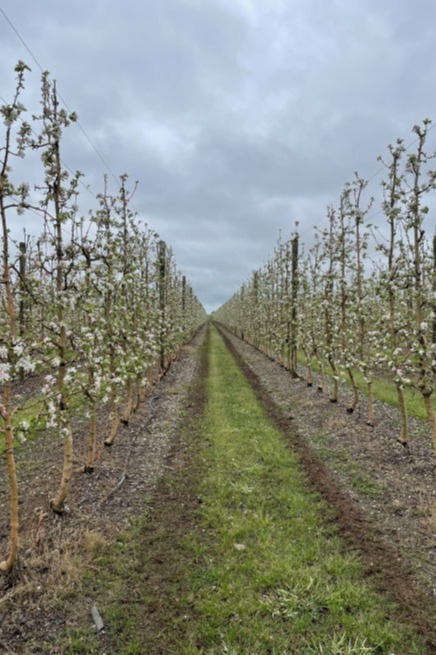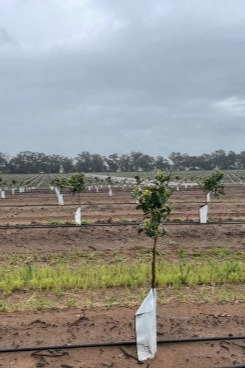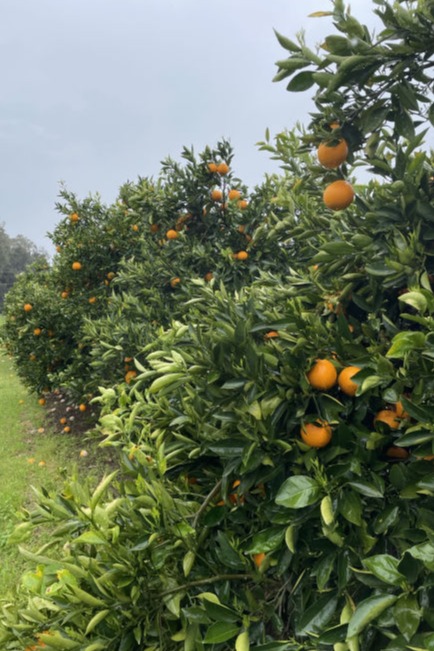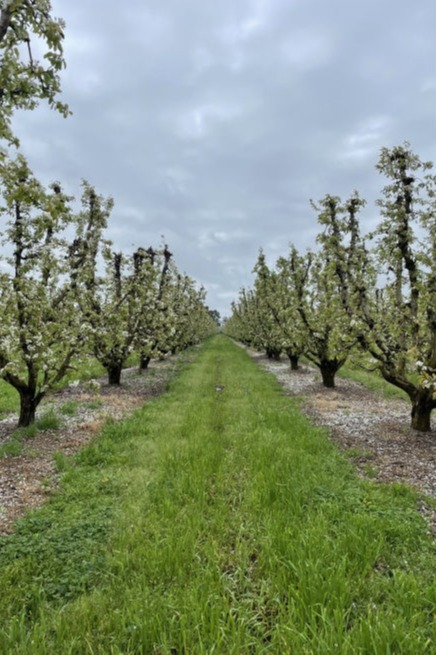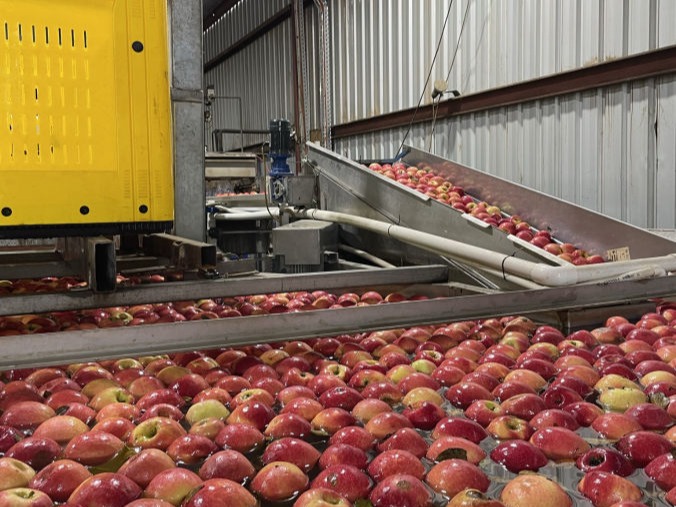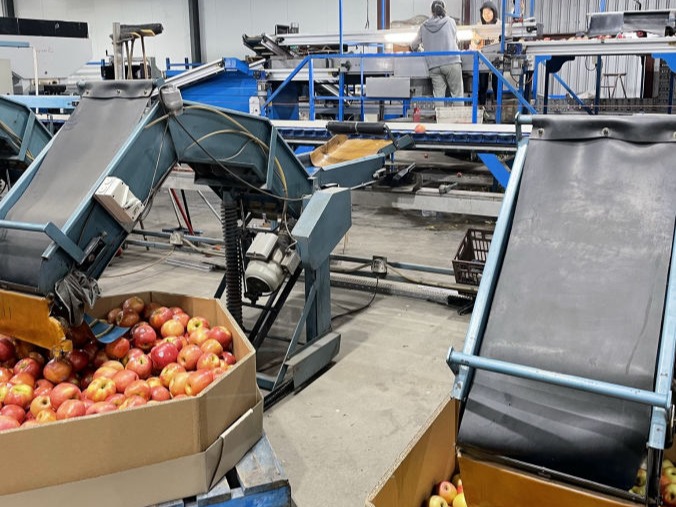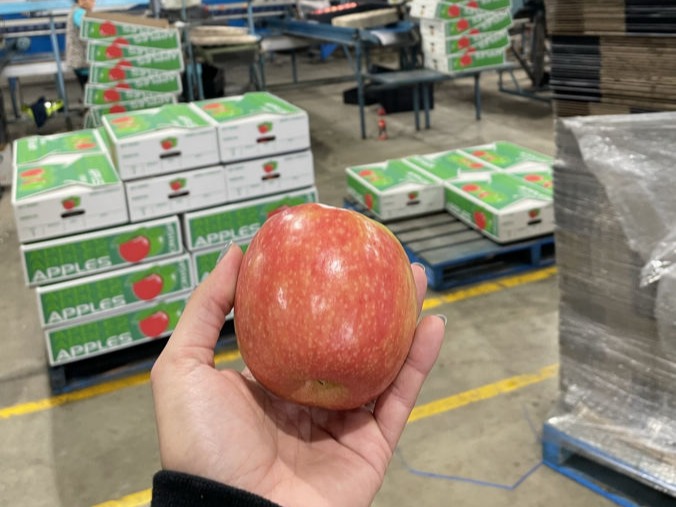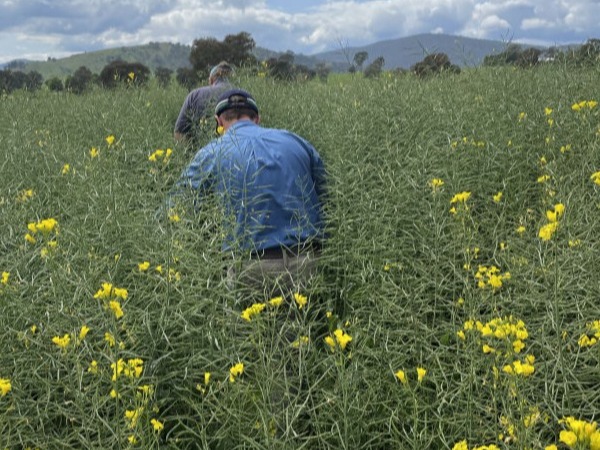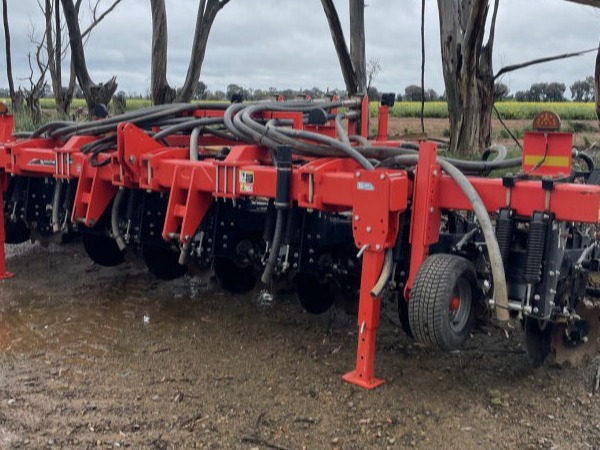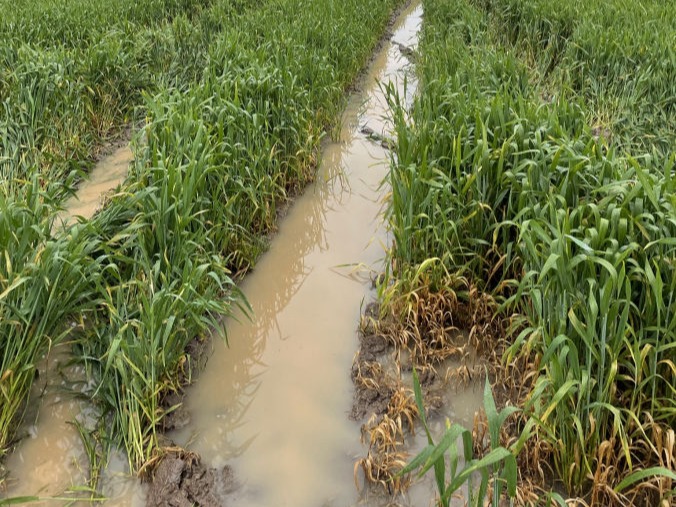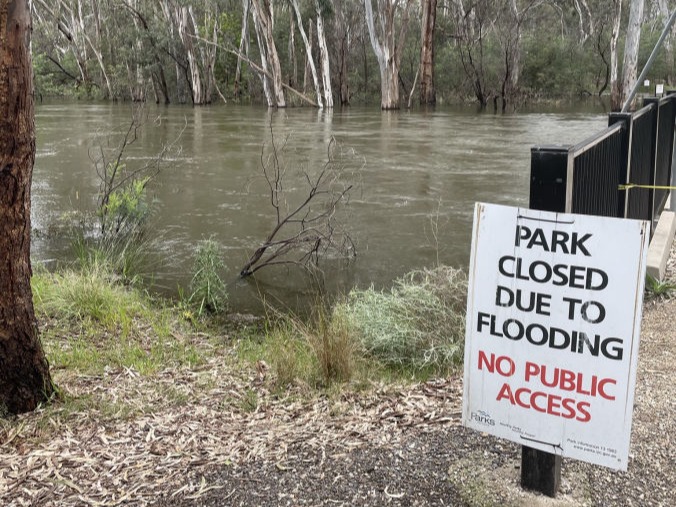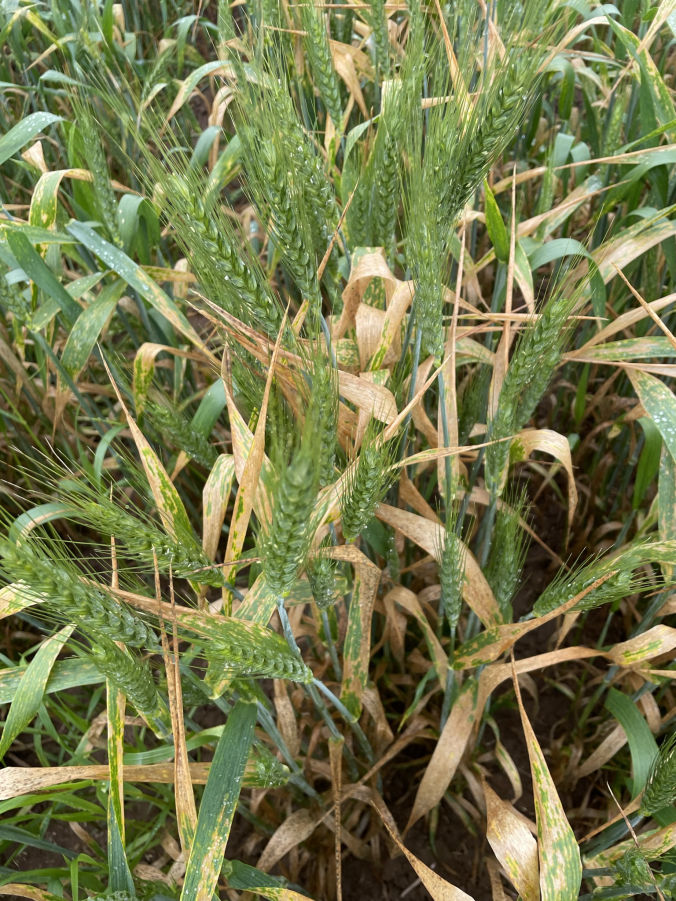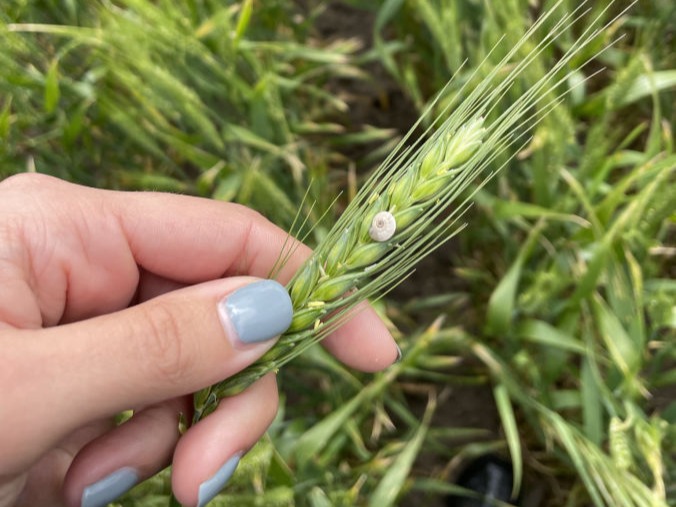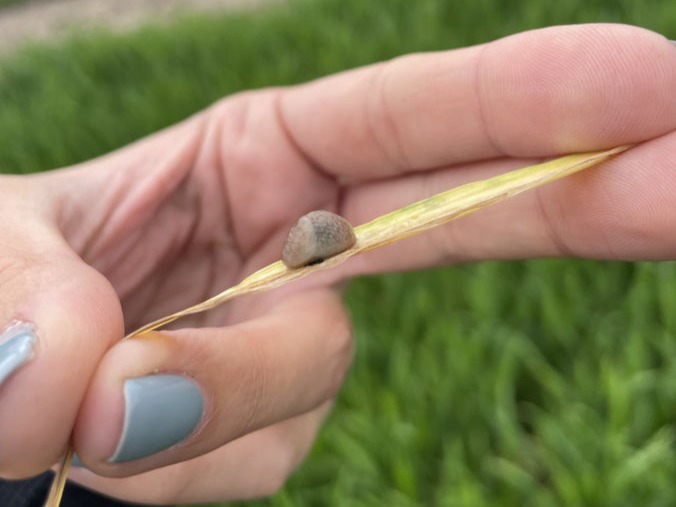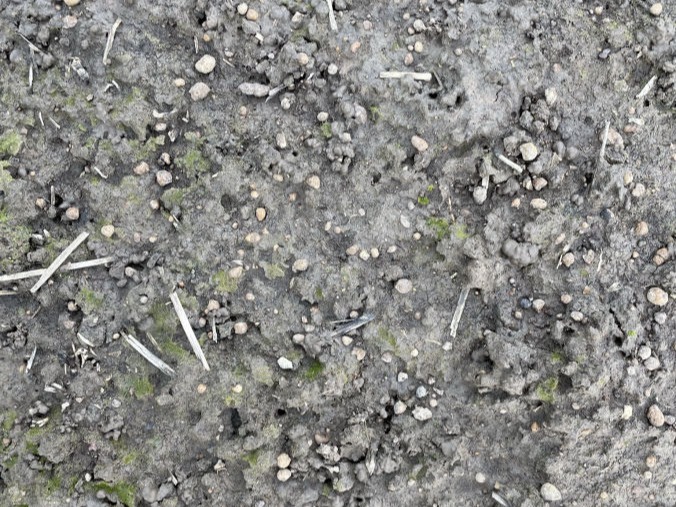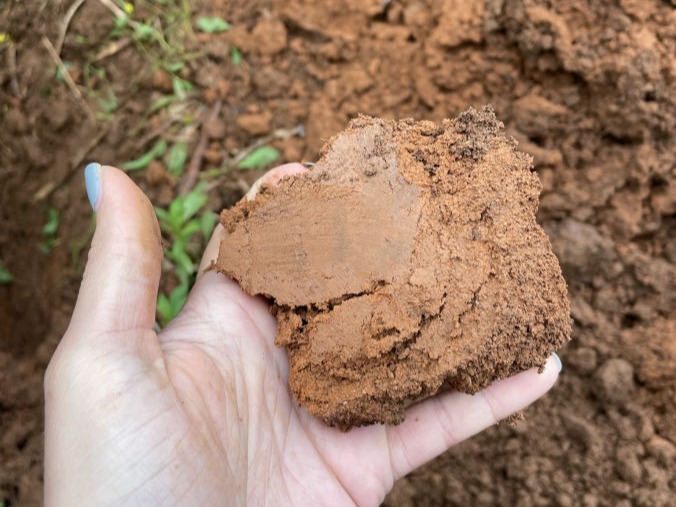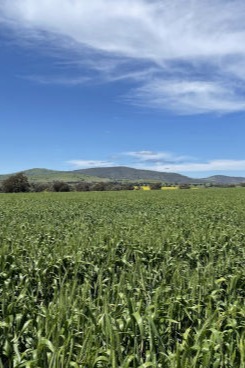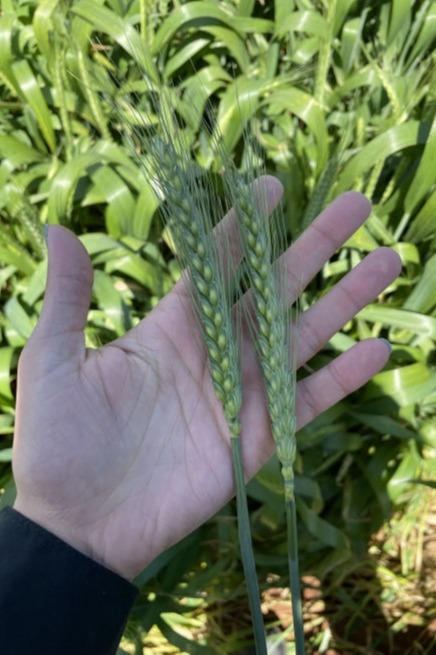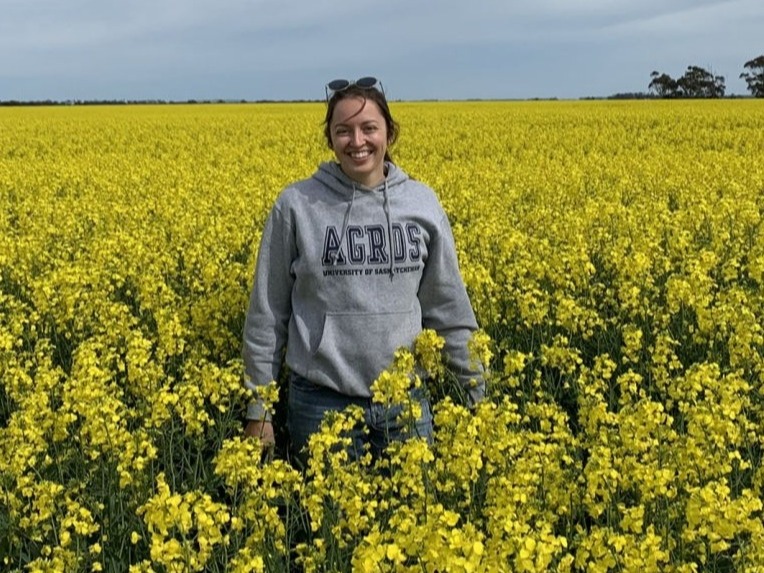
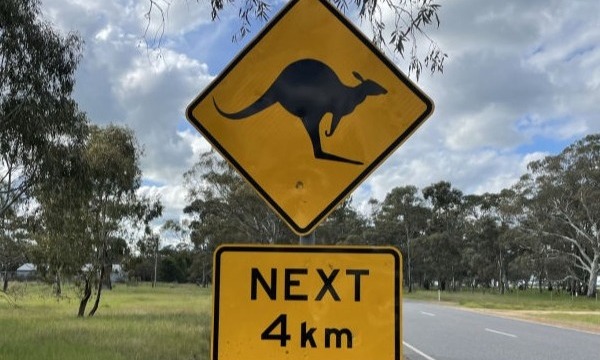


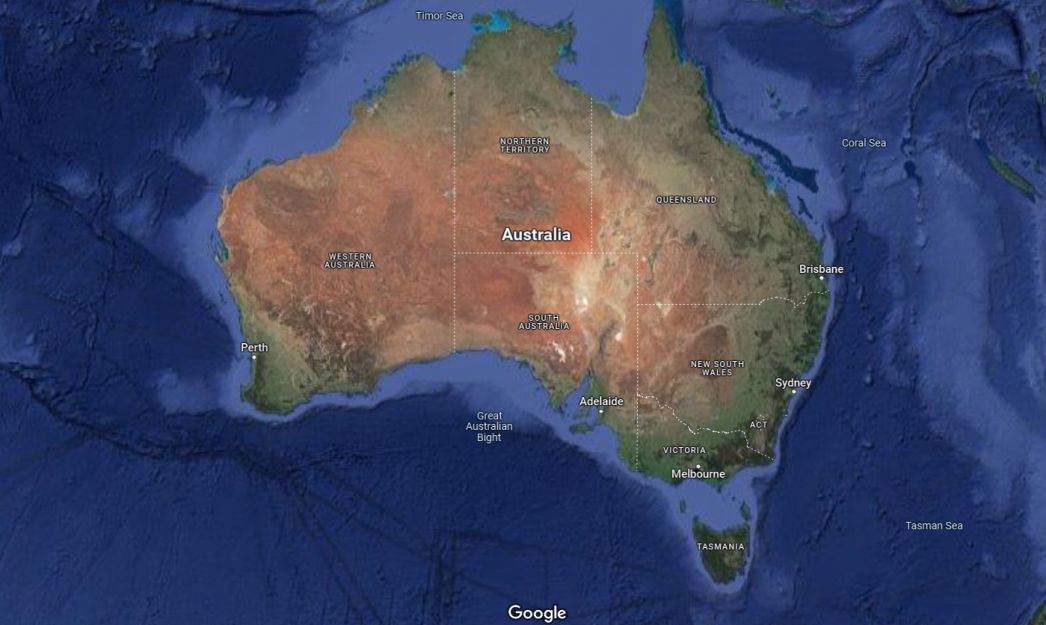
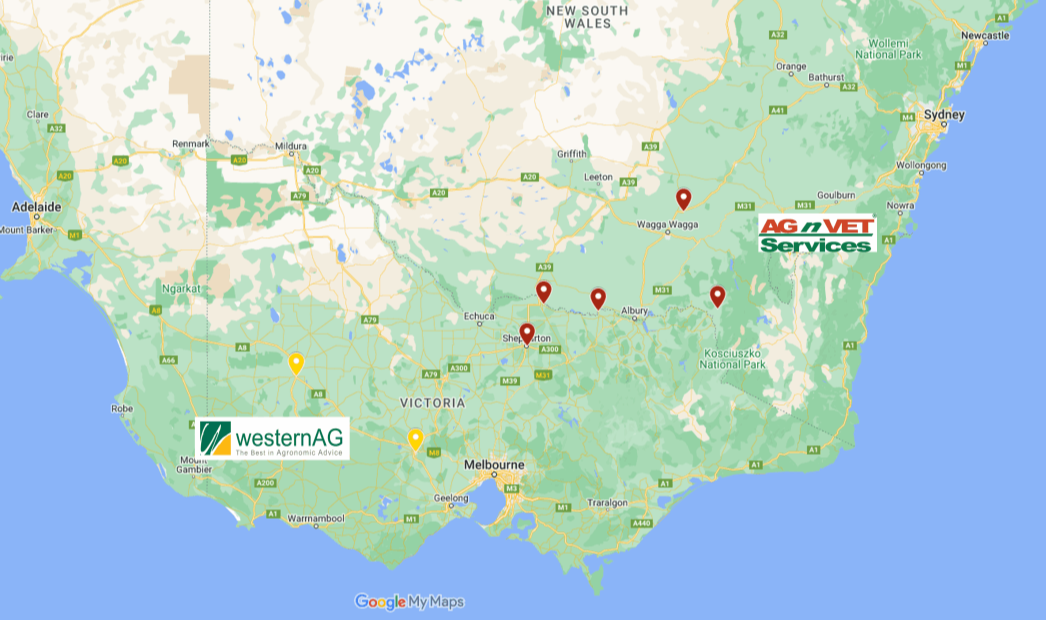
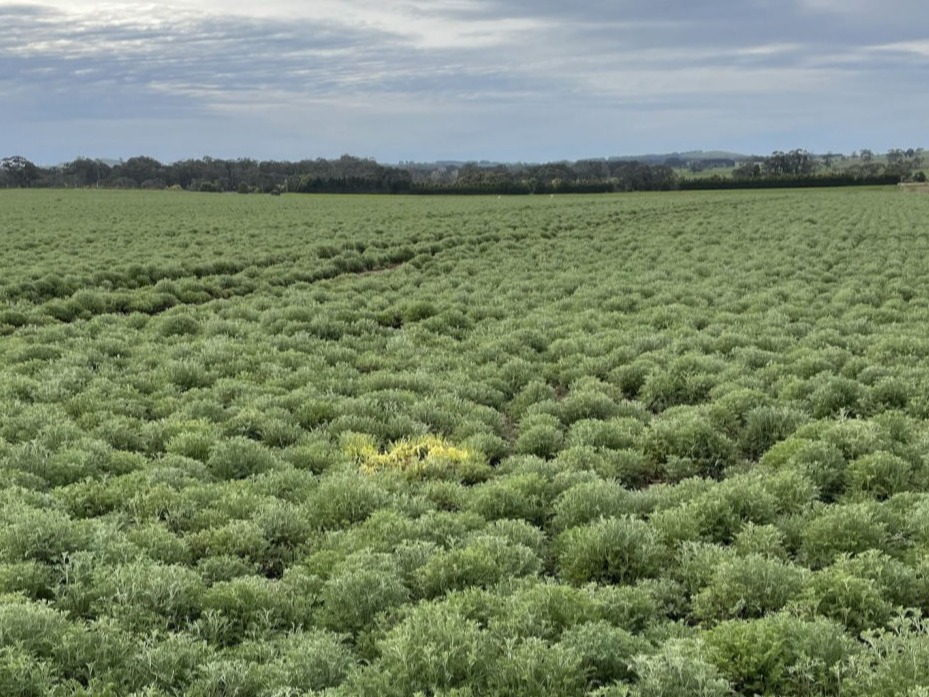
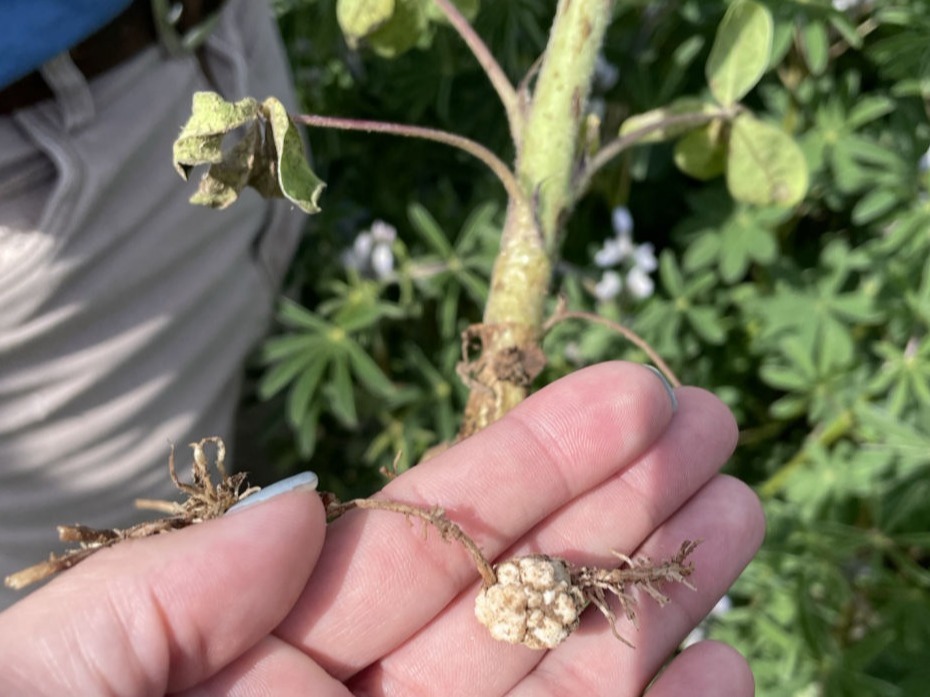
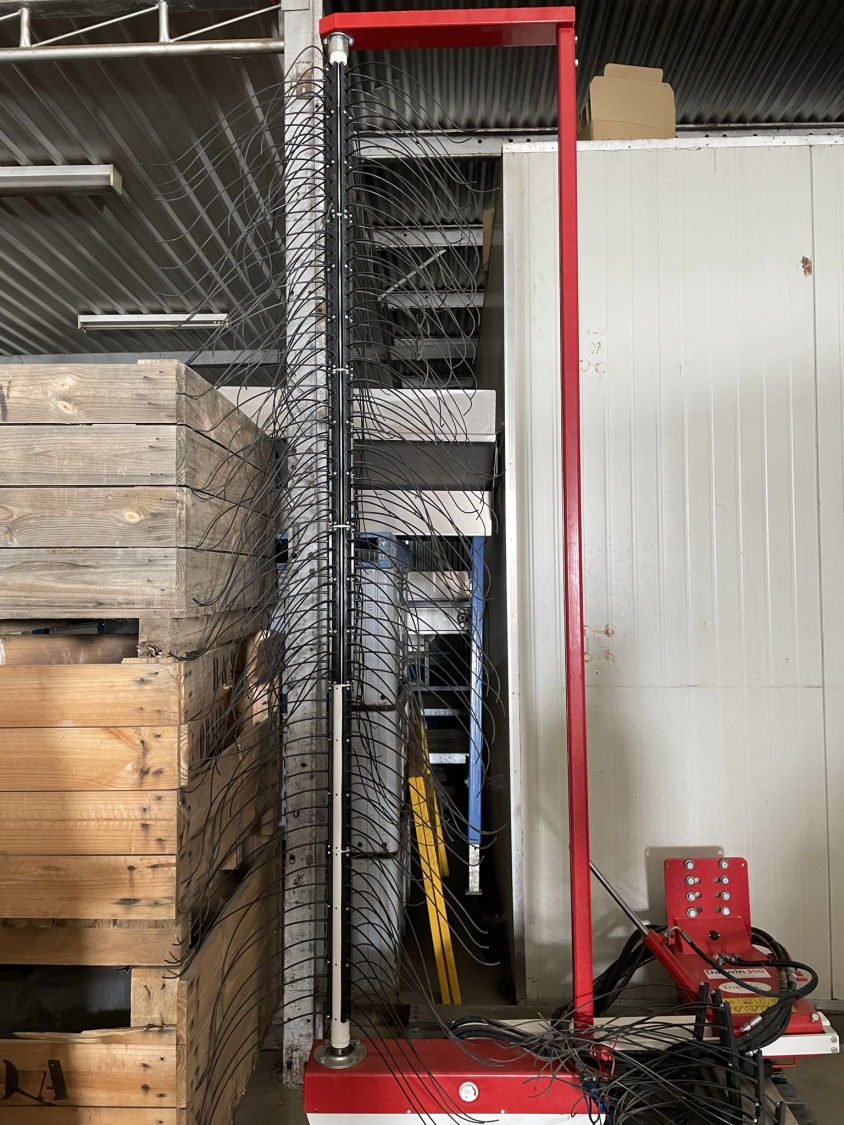
In the Cobram area, summer cropping is also practiced. Crops like corn, rice and cotton are grown under irrigation. Unfortunately, when I was there it was still too cold, so no summer crops were seeded yet.
Horticulture was heavily present in Shepparton and Cobram. While in Cobram, we spent a day with one of AgNVet’s horticulture agros touring orchards and packaging plants. Cobram is a good stone fruit (peaches, plums, etc.) growing area, but they also grow different citruses, apples, pears and persimmon. One thing I quickly learned is how labour-intensive horticulture is – thinning flowers/fruit, pruning and picking fruit is almost exclusively done manually. More machinery is being introduced to reduce labour requirements, like the Darwin 3000. This is mounted to a tractor, and spins knocking flowers off the trees to thin them. The speed is dependent on how many flowers need to be removed.
We saw a variety of orchards at different stages, from establishment to orchards older than me! After planting a new block, it takes approximately three years for apples and peaches to produce fruit and ten years for pears. “Plant pears for heirs” is a common saying due to this fact. Large amounts of gypsum are applied prior to planting, while the rest of the fertility is applied through fertigation twice a year. Once established, apples will last up to forty years, stone fruit twenty years, and pears eighty to one hundred years. Multiple pesticide applications are made in a year, between fifteen to twenty.
